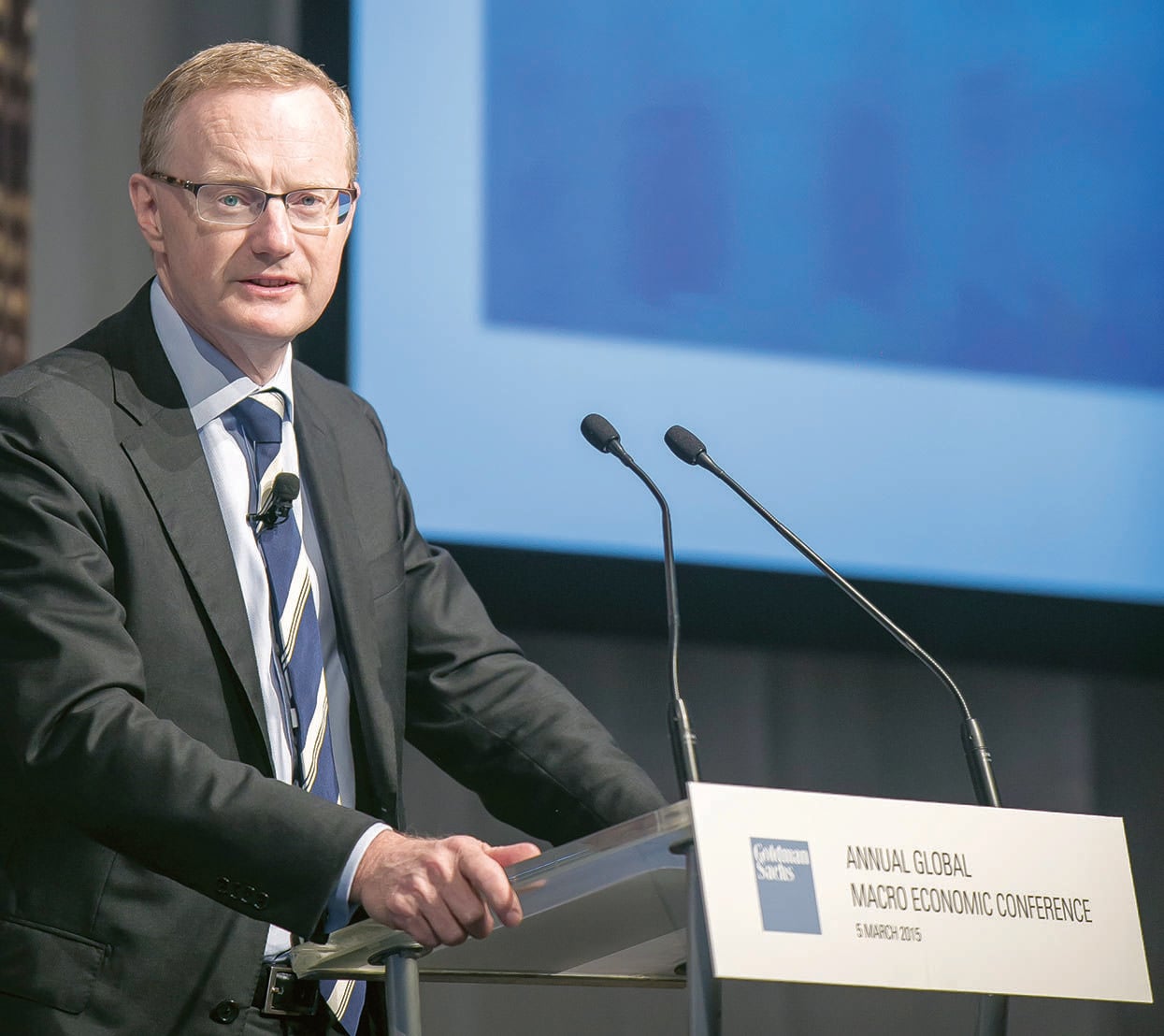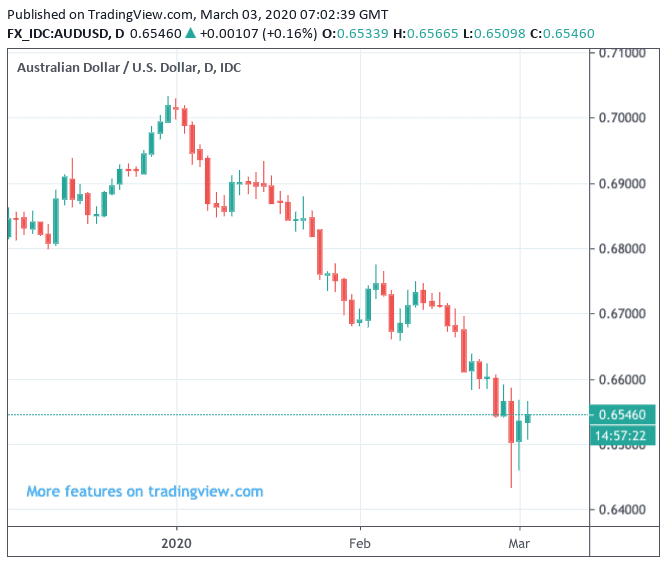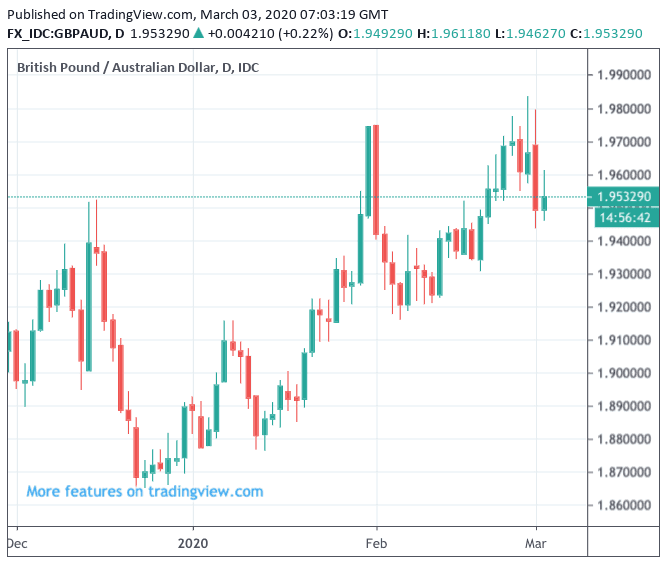Australian Dollar: RBA Cuts Interest Rates and More Cuts Coming say Economists
- GBP up against AUD following RBA rate cut
- But AUD/USD bounces
- Markets had expected a more aggressive 0.50% cut
- Promise of further cuts to keep AUD subdued
- Quantitative easing now a possibility

Above: Governor Philip Lowe. Photo Source: RBA on Flickr, reproduced with permission from the RBA press office.
- GBP/AUD spot at time of writing: 1.9533, +0.20%
- Bank transfer rates: 1.8837-1.8973
- FX specialist rates: 1.9250-1.9344 >> More details
The Australian Dollar fell back against the Pound in the wake of the Reserve Bank of Australia's (RBA) decision to cut the cash rate by 25 basis points, taking Australia's basic interest rate from 0.75% to 0.50%.
And with the RBA signalling it is likely to cut interest rates again in the future, the outlook for the Australian currency remains soft.
In a statement, the RBA said it took the decision to cut rates in order to support the domestic economy as it responds to the global coronavirus outbreak.
The RBA said that the outbreak had clouded the near-term outlook for the global economy and means that global economic growth in the first half of 2020 will be lower than earlier expected.
"The coronavirus outbreak overseas is having a significant effect on the Australian economy at present, particularly in the education and travel sectors. The uncertainty that it is creating is also likely to affect domestic spending. As a result, GDP growth in the March quarter is likely to be noticeably weaker than earlier expected," said Philip Lowe, Governor at the RBA.
Currencies tend to decline when their central bank cuts interest rates, or to be more specific, currencies tend to decline when markets start building expectations for an interest rate cut in the future. Expectations for a rate cut have been building for some time and increased substantially when the coronavirus outbreak hit Australia's most important trading partner, China.
Indeed, Tuesday's interest rate cut was expected by markets in advance and the Australian Dollar's reaction to the actual decision reflects a market that was not surprised by the RBA's decision. In fact, the AUD actually rose against the U.S. Dollar, this is because some in the market had been expecting a more sizeable cut of 0.50%.
"The Australian Dollar traded somewhat lower at the time of the release, but bearing in mind that this was largely priced in following the initial signals over a coordinated policy action by major central banks, the slide was short-lived. The Aussie was found higher against the US dollar, perhaps aided by the broader upbeat sentiment. Paradoxically, despite the RBA cutting rates and expected to cut more, the Aussie may now enjoy some gains for a while on expectations that other Banks will follow suit in order to prevent a global recession," says Charalambos Pissouros, Senior Market Analyst at JFD Group.
Key to the Australian Dollar's outlook is how many further interest rate cuts are coming, or is the RBA now done with rate cuts? The rule of thumb is that deeper cuts would weigh on the currency while no further cuts would prove supportive.
According to Lowe, the RBA "will continue to monitor developments closely and to assess the implications of the coronavirus for the economy. The Board is prepared to ease monetary policy further to support the Australian economy."
This signals the RBA is on an easing footing and the bar to further rate cuts is therefore low, something that would be expected to limit upside in the Aussie Dollar.
"We expect a follow‑up 25bp cut in April," says Joseph Capurso, FX Strategist at Commonwealth Bank of Australia. "AUD/USD canfall back below 0.6500 because we expect the global and Australian economic data to deteriorate further because of the coronavirus."
A further decline in the AUD/USD exchange rate could well assist the Pound-to-Australian Dollar exchange rate maintain its ongoing bout of appreciation, which has been particularly notable in 2020:
"The cut in rates to record lows does risk dampening confidence in the short term and it’s a negative for those relying on income from bank deposits. However, doing nothing about weak growth and the new threat posed by coronavirus would be a bigger blow to confidence in the economy, the value of household debt is more than double the value of household deposits so the saving for those with a mortgage will be more than double the loss of income for those relying on bank deposits and rate cuts help keep the $A lower than it otherwise would be which helps companies that compete internationally. So on balance there is a boost to growth," says Shane Oliver, Head of Investment Strategy and Chief Economist at AMP Capital.
The cut to Australia's basic interest rate will ease pressure on home owners as variable mortgage rates are now being seen at their lowest rates since the 1950s.
This should ensure that an ongoing pick-up in the established housing market extends.
With interest rates falling to record lows at the RBA, markets will soon start asking questions as to whether the RBA is in fact running out of ammunition to fight further economic slowdowns.
Expectations for quantitative easing - the printing of money to buy up sovereign bonds and corporate bonds - will likely be the RBA's next big policy initiative. We have seen in the past that when central banks engage in quantitative easing, the currency they issue tends to fall in value.
Talk of quantitative easing will therefore only add to the view that the Australian Dollar's outlook is soft.
We expect another rate cut taking the cash rate to 0.25% next month. With the RBA signalling on several occasions that 0.25% is likely the floor for the cash rate we don’t see rates falling beyond this as there is not much evidence that zero of negative rates would help. But given the size of the threat to growth once rate cuts are exhausted at 0.25% the RBA is likely to turn to quantitative easing during the second half. Ideally this should be combined with broad based fiscal stimulus," says Oliver.






